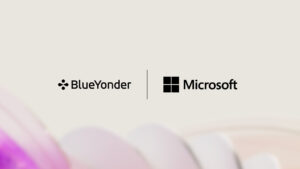
Predictive Analytics in Healthcare and the Quadruple Aim
| Download the free Nursing Informatics, Predictive Analytics & AI Webinar |
As a nurse in clinical practice, you use technology every day. From documenting in the electronic health record to keeping an eye on telemetry and vital sign monitoring machines, using IV Smart Pumps, barcode administration and tracking, and bed placement applications you collect data and information that becomes knowledge. This informs your decision-making throughout the nursing process and helps you to provide patient-centered, safe, quality care.
Within your electronic health record, there are prompts and alerts that inform you to act or take notice of the condition of a patient while they are in your care. The clinical decision support tools use the knowledge you collect through daily care tasks along with best practice guidelines and provides patient-specific information that can inform you to keep them safe.
Clinical decision support tools directly promote and enhance what is known as the Quadruple Aim (QA) in healthcare. This approach to patient-centered, cost-controlled population healthcare is imperative in our healthcare climate today. Nurses are at an advantage as applied clinical technologies directly address three aspects the Quadruple Aim – improving population health and patient experience, and containing costs – making a difference on a large scale.
A unique facet of the Quadruple Aim is that it also works to addresses the well-being of the nurse, physician and other care providers. Nurses know that strenuous patient care and human factors such as understaffing, alarm fatigue, miscommunications, provider grief, and non-adoption of technology can cause clinician dissatisfaction and burnout. New technologies identified and adopted by nurses, can significantly improve this aspect of the Quadruple Aim.
While the purpose of medical technology is to provide safe, effective care and excellent patient experience, the same should be said for the users of the technology. Selecting the right kind of technology is imperative to accomplishing the fourth arm of the Quadruple Aim. Nurses are uniquely situated to inform healthcare organizations about new and emerging technologies and support their adoption, like clinical decision support tool successfully used in practice today.
One emerging technology that can lend support to the staff satisfaction arm of the Quadruple Aim is Predictive Analytics in healthcare. This practice of analyzing clinical and extraneous data can identify patient problems and allow nurses to act before clinical and staffing situations worsen. This new technology identifies who will get sick to manage patients’ deteriorating conditions and prevent death. Department overcrowding prediction can encourage appropriate staffing levels to alleviate short-staffing causing burnout.
Nurses can be on the forefront of embracing and encouraging the use of Predictive Analytics in healthcare knowing it keeps patients safe from worsening health or death. The technology also enables the correct care plan to provide appropriate patient care in the appropriate number of days in the hospital, to prevent complications and readmissions. These applications of Predictive Analytics will decrease nurse and physician burnout, dissatisfaction and turnover.
For the success of the Quadruple Aim in your care space, nurses can advocate on many levels for the use of emerging technologies such as Predictive Analytics in healthcare to cost-effectively improve population outcomes, and patient and provider satisfaction.




